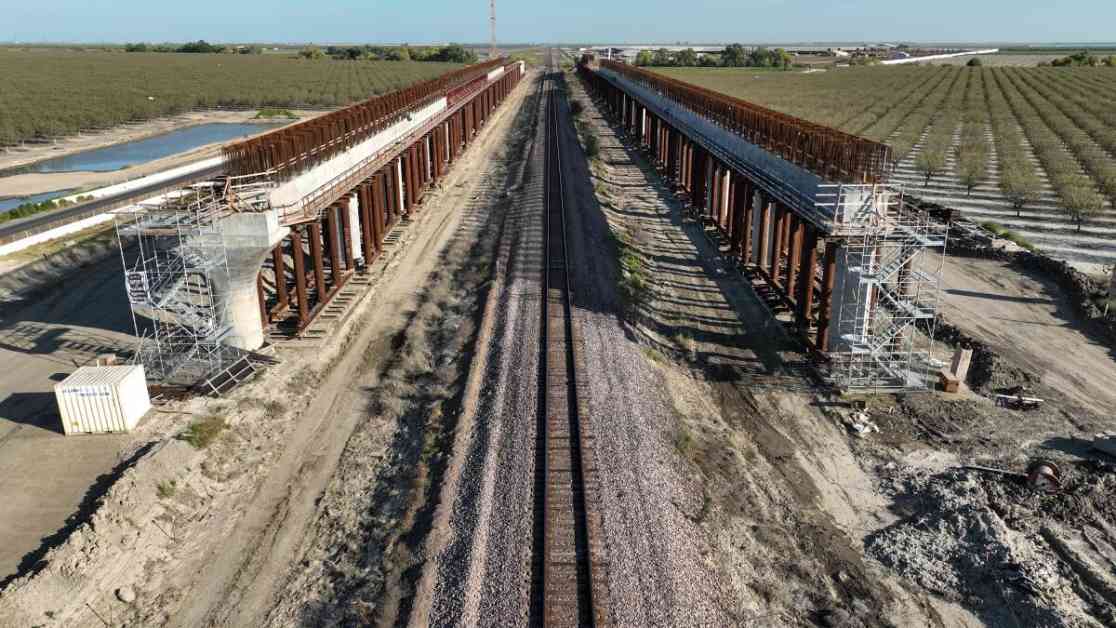California’s High-Speed Rail Project Faces Progress and Challenges
California’s ambitious high-speed rail project, aimed at connecting Los Angeles to the Bay Area, has been met with a mix of progress and challenges. State leaders, including Governor Gavin Newsom, gathered in Kern County to provide updates on the project, which also includes plans to link Southern California to Las Vegas through a high-speed line.
Construction efforts have been focused on a 119-mile stretch in the Central Valley, with hopes of eventually expanding the rail network to include a proposed 54-mile corridor from Palmdale to Victor Valley, connecting to Brightline West’s high-speed train to Nevada. The High Desert Corridor Joint Powers Agency is currently reviewing a proposal to create a seamless connection between these high-speed rail services.
Challenges and Criticisms
Despite the promising developments, there are still challenges ahead for the completion of the entire project. One major hurdle is securing the tens of billions of dollars needed to finish the construction. Governor Newsom addressed the criticism and skepticism surrounding the project, emphasizing the importance of moving forward and taking responsibility for the current state of affairs.
The project has faced criticism for its chosen route through the east side of the San Joaquin Valley instead of a more direct path along Interstate 5 on the sparsely populated west side. However, Newsom highlighted the positive impact the project has had on job creation in the Central Valley and its role in revitalizing local economies.
Future Prospects and Funding Challenges
Ian Choudri, the new chief executive of the California High-Speed Rail Authority, expressed optimism about the project’s future, noting the transformative potential of high-speed rail in the Southwest. Despite the project’s budget increasing significantly from its initial proposal, there is still uncertainty surrounding its funding, particularly with recent challenges from the federal government.
Transit experts have emphasized the need to explore alternative funding options to ensure the project’s completion. State Senator Dave Cortese has proposed legislation to investigate public-private partnerships as a means of bridging the funding gap and securing the project’s future.
In the face of these challenges, the state remains committed to advancing the high-speed rail project and redefining transportation in the region. With determination and strategic planning, California aims to realize its vision of a modern and efficient rail network that will benefit communities and travelers alike.

